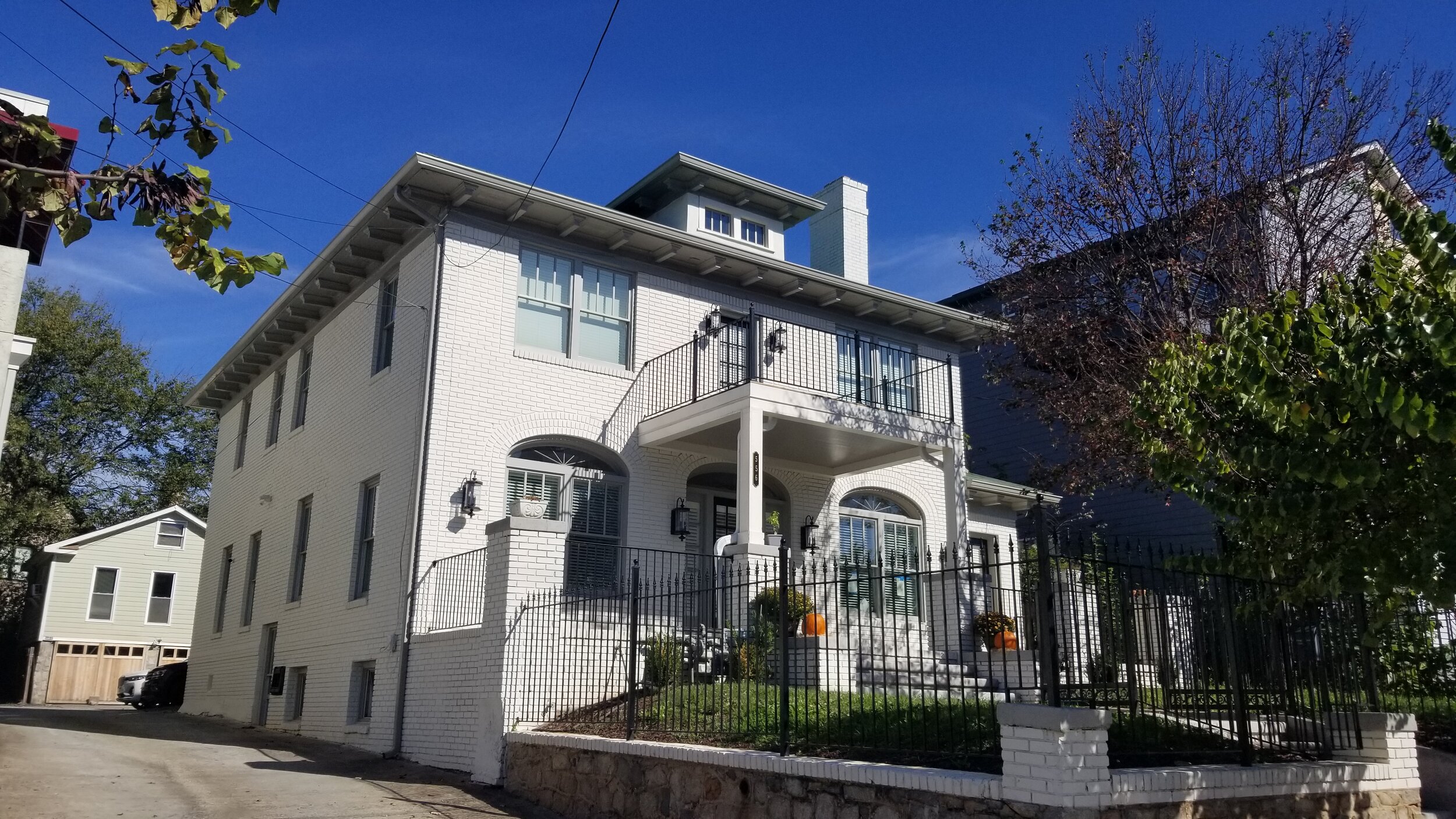Fuller-Freedom House Designated As Historic Landmark
By Alicia Guzmán, Thurston Fellow in Historic Preservation, Office of Design, Historic Preservation Studio
The Fuller-Freedom House is a tangible symbol of community empowerment, protest, and comradery that is likely unknown to many Atlanta residents and visitors. Located on John Wesley Dobbs Avenue across from the David T. Howard Middle school, this Italian Renaissance home is in the Old Fourth Ward neighborhood and listed as a contributing property to the Martin Luther King Jr. National Register Historic District.
Prior to the Department of City Planning’s further investigation of the Fuller-Freedom House, little research had been compiled to contextualize the historic nature of the home in the larger Atlanta narrative. The project was presented to the Department of City Planning by the current homeowner, Mrs. Cori Honoré. Her shared enthusiasm to preserve the historic integrity of the home has played a positive role in the ongoing efforts to designate the property. Extensive research conducted on the Fuller-Freedom House unveiled layers of history for several prominent religious leaders, whose influences have been minimally recognized as contributors to the physical and social landscape of Atlanta. Many bishops in Atlanta in the 20th century were located on what was previously known as Houston Street, now John Wesley Dobbs Avenue. The development of houses between Howell and Randolph Streets was once referred to by locals as “Bishop’s Row”.
1928 construction of the Fuller House
The Fuller-Freedom House has associations with several local and national leaders of the 20th century. Built in 1928 by the prominent Bishop William E. Fuller Sr., founder of the Fire Baptized Holiness Church, the house was used by the Fuller Family for over 30 years. The houses on this block were owned by affluent and influential Bishops of Atlanta’s black religious community in the first half of the 20th century. Religious leaders like Bishop Fuller Sr. were heavily involved in the social circles of other prominent religious leaders in Atlanta and across Georgia.
In the 1960s after the Fuller family moved out of the home, it was separated into rental space. Between 1963-1966, the house played a pivotal role in the Civil Rights Movement as it served as a place of rest, rejuvenation, and strategic thinking for the Student Non-Violent Coordinating Committee (SNCC). Chaired by the young Civil Rights leader John Lewis until 1965 and then by the future Black Panther Party leader Stokely Carmichael, the SNCC organization’s headquarters was based in Atlanta on Raymond street near the Morris Brown College campus. The student-led movement was involved in several local and national Civil Rights campaigns. Faced with threats, intimidation tactics, and violence, the students of the movement were resilient and determined to fight for the cause.
Between campaign projects and unjust jail sentences, students from other universities stayed in what would be known as Freedom Houses. Through the organization of the 1964 Freedom Summer in Mississippi, terms like Freedom Schools, Freedom Rides, and Freedom Signer emerged from the Civil Rights era. Freedom Houses were spread out across the South and used as safe social gathering spots to renew energy and strengthen the relationships of the SNCC volunteers.
Upon the successful designation of the Fuller-Freedom House, there will be a new City of Atlanta landmark Building / Site that will highlight another layer of Atlanta’s Black history and culture. The Fuller-Freedom House’s significance is associated with the actions and legacies of those that have walked its halls. From the nationally known SNCC chairmen John Lewis and Stokely Carmichael, to the local and regional association of significant leaders like SNCC secretary Ruby Doris Robinson, Bishop Fuller Sr., Bishop Fuller Jr., and Bishop Joseph S. Flipper. The Fuller-Freedom House is an example of the positive impact of the City of Atlanta’s Future Places Project. Aligned with our mission to preserve historic places, spaces, and heritage, the Office of Design is actively working with the rest of the Department of City Planning to ensure all communities and all historic places and spaces are recognized and retained for the benefit of Atlanta’s future generations.
Further readings provided on SNCC found at:
Further readings about the Fire Baptized Holiness Church found at:


